Abstract
Human blood neutrophils manifested markedly decreased motility following exposure to the horseradish peroxidase (HRP)/H2O2/halide system in vitro. These cells were protected from this inhibitory effect (of the HRP/H2O2/halide system) by inclusion of concentrations in the reaction system of ascorbate, cysteinee, levamisole and thiamine which stimulate neutrophil migration and inhibit activity of the HRP/H2O2/halide system. The reversible nature of the oxidative inhibition of migration was demonstrated by exposing neutrophils to the HRP/H2O2/halide system for 15 min followed by washing to remove the components of the peroxidative system, and subsequent addition of ascorbate, cystein, levamisole, thiamine and the reducing agent, dithiothreitol. Neutrophils so treated completely recovered normal or increased motility induced by the leucoattractants endotoxin-activated serum or synthetic chemotactic tripeptide f-met-leu-phe. This reversible loss of migratory responsiveness following exposure of neutrophils to the HRP/H2O2/halide system was not associated with decreased cell viability or adherence. However, membrane oxidation was accompanied by increased uptake of radiolabelled f-met-leu-phe and degranulation. The increased leucoattractant uptake was decreased by ascorbate, levamisole and thiamine. These agents also prevented oxidation of the neutrophil membrane by the HRP/H2O2/halide system as measured indirectly by inhibition of iodination.
Full text
PDF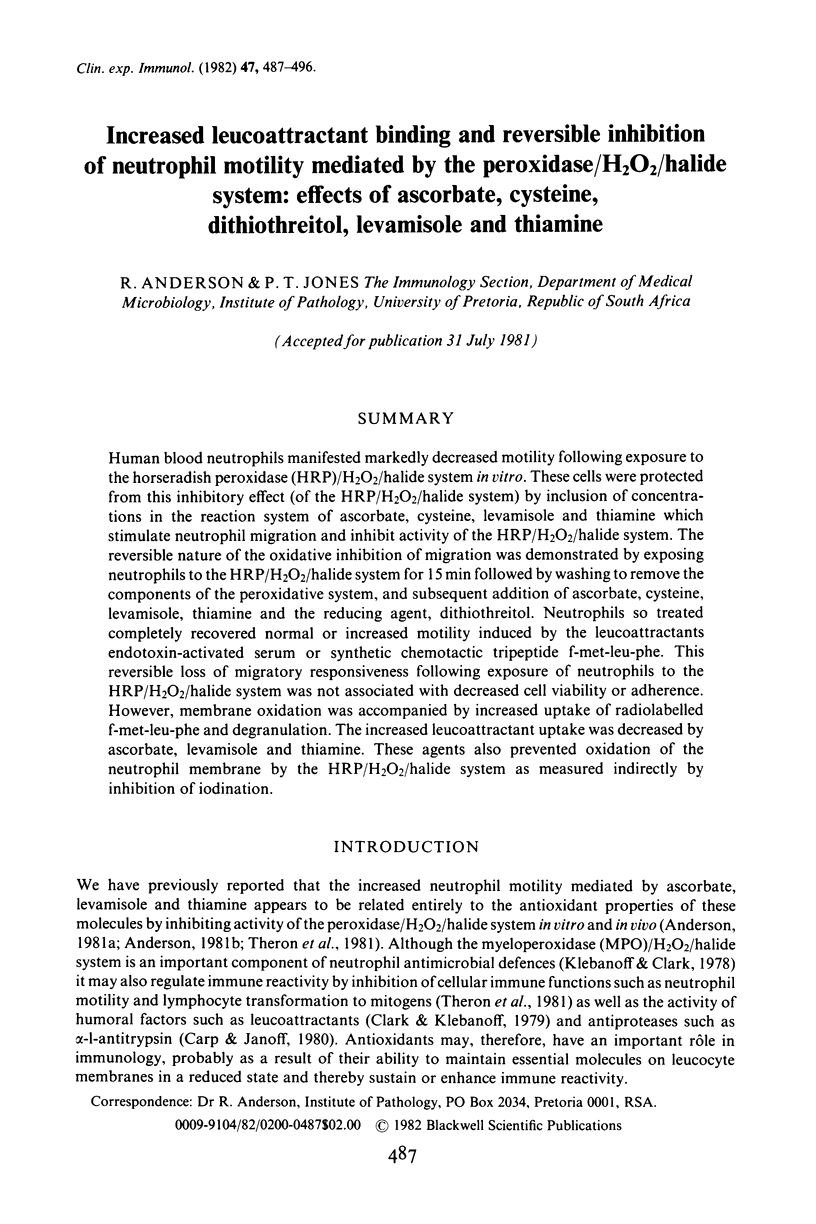
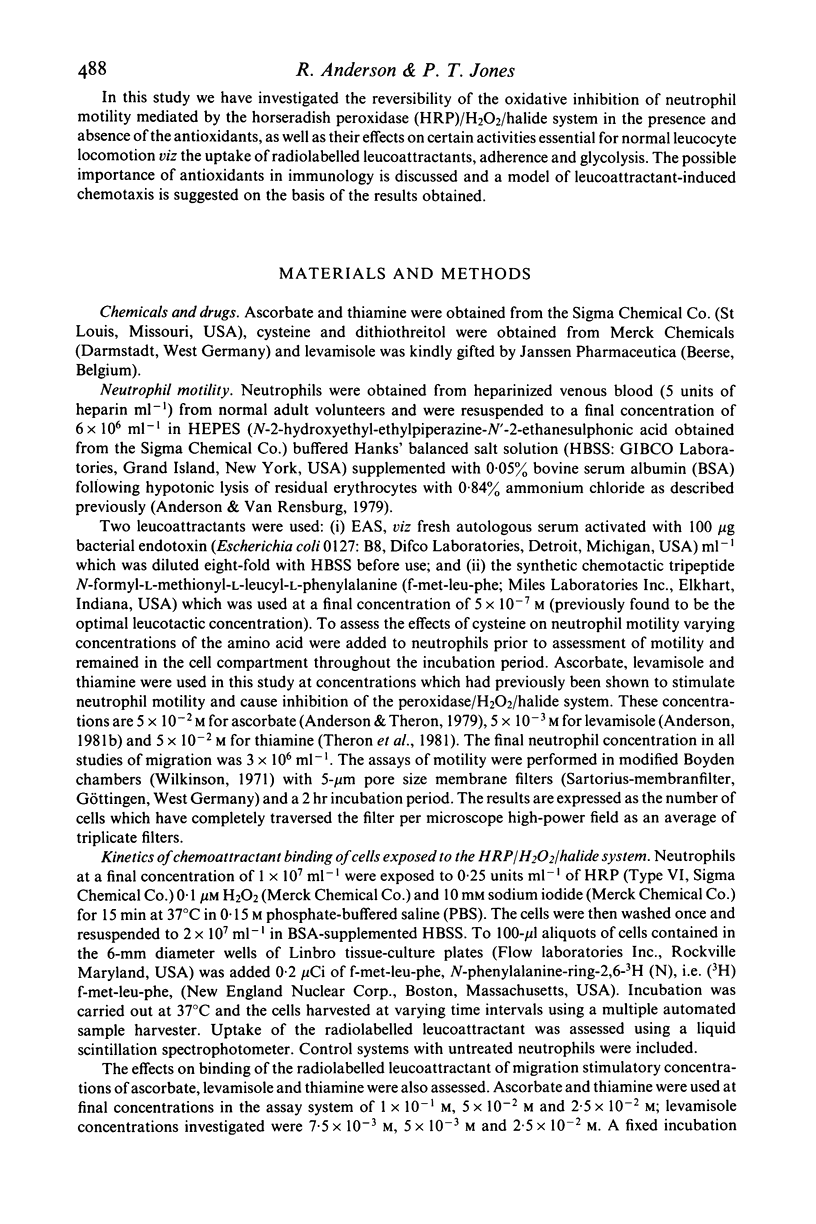
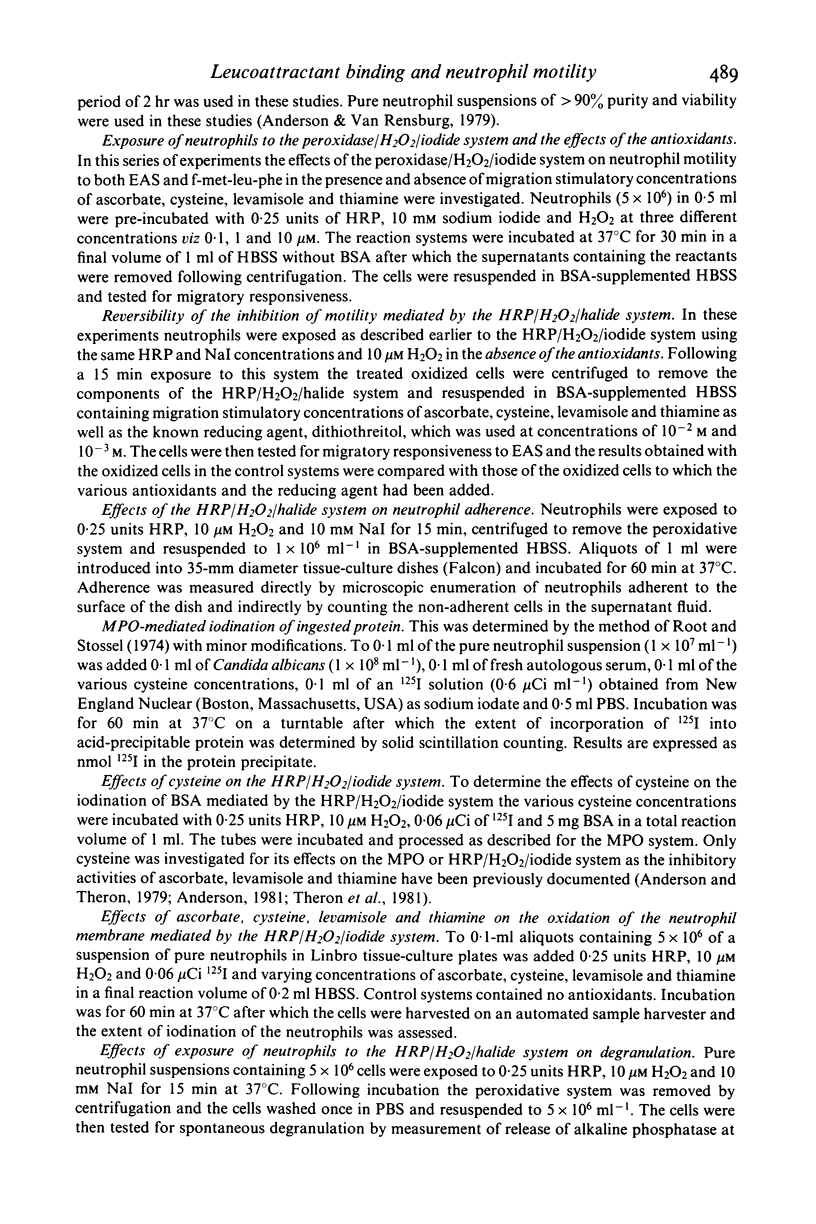
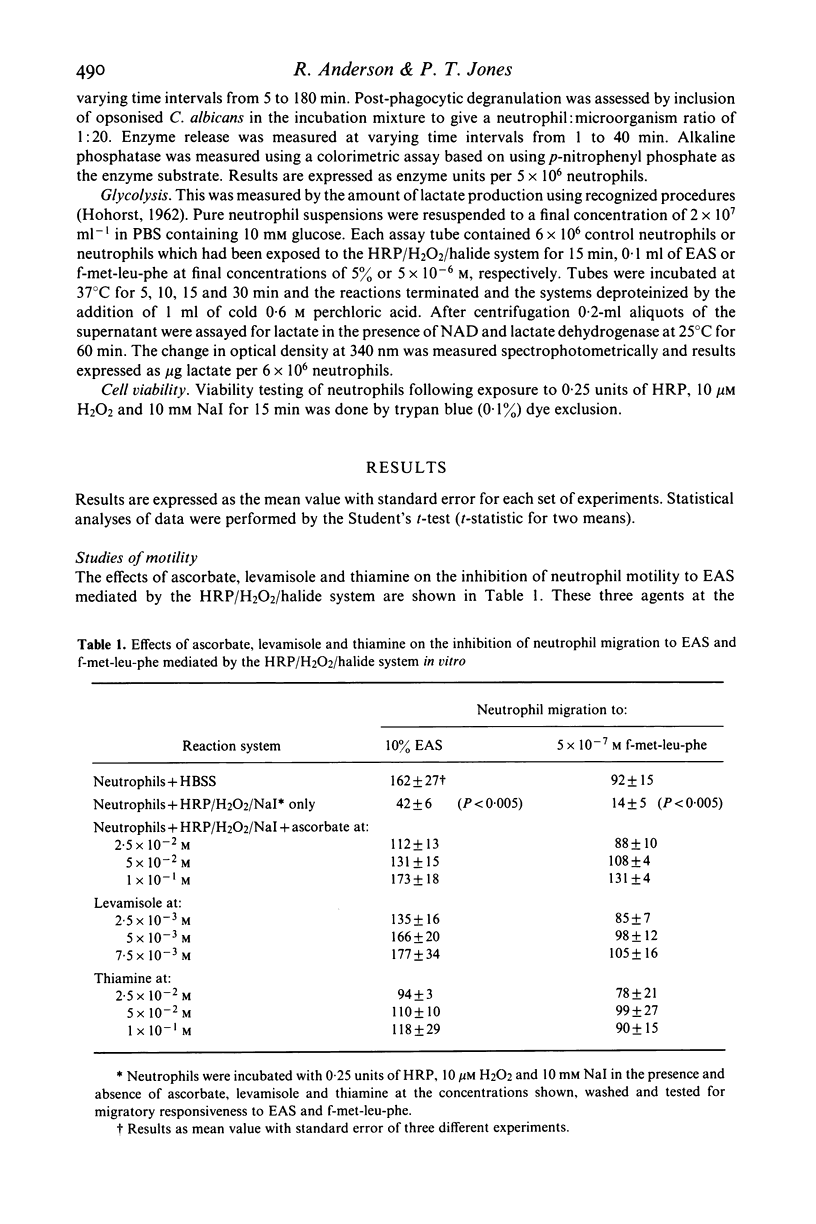
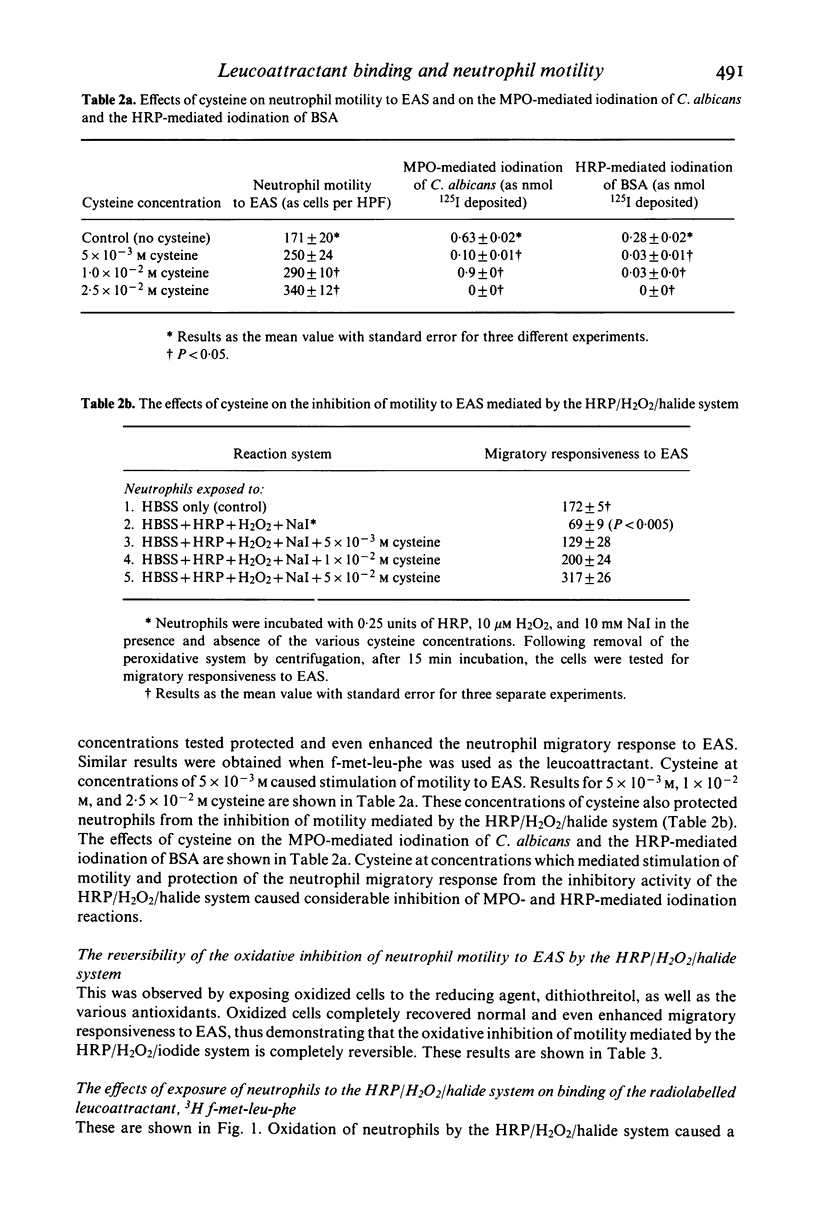
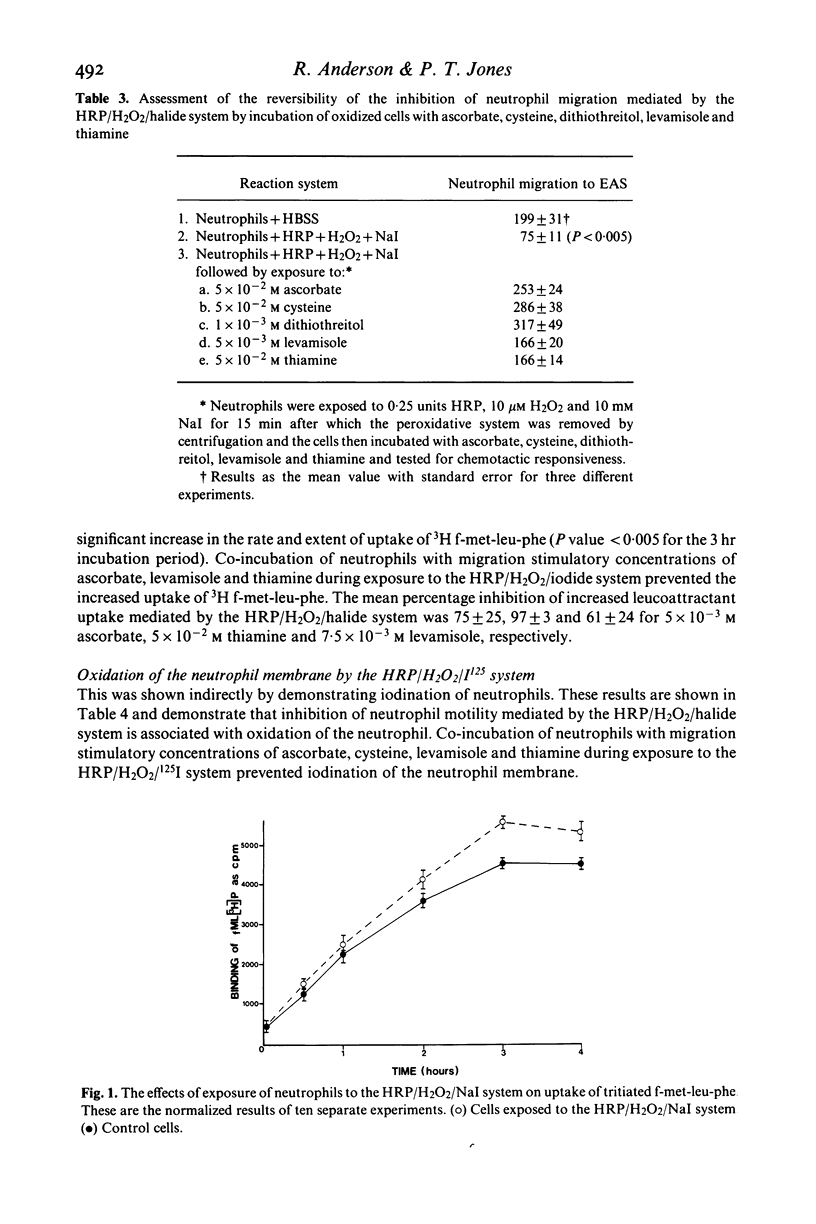
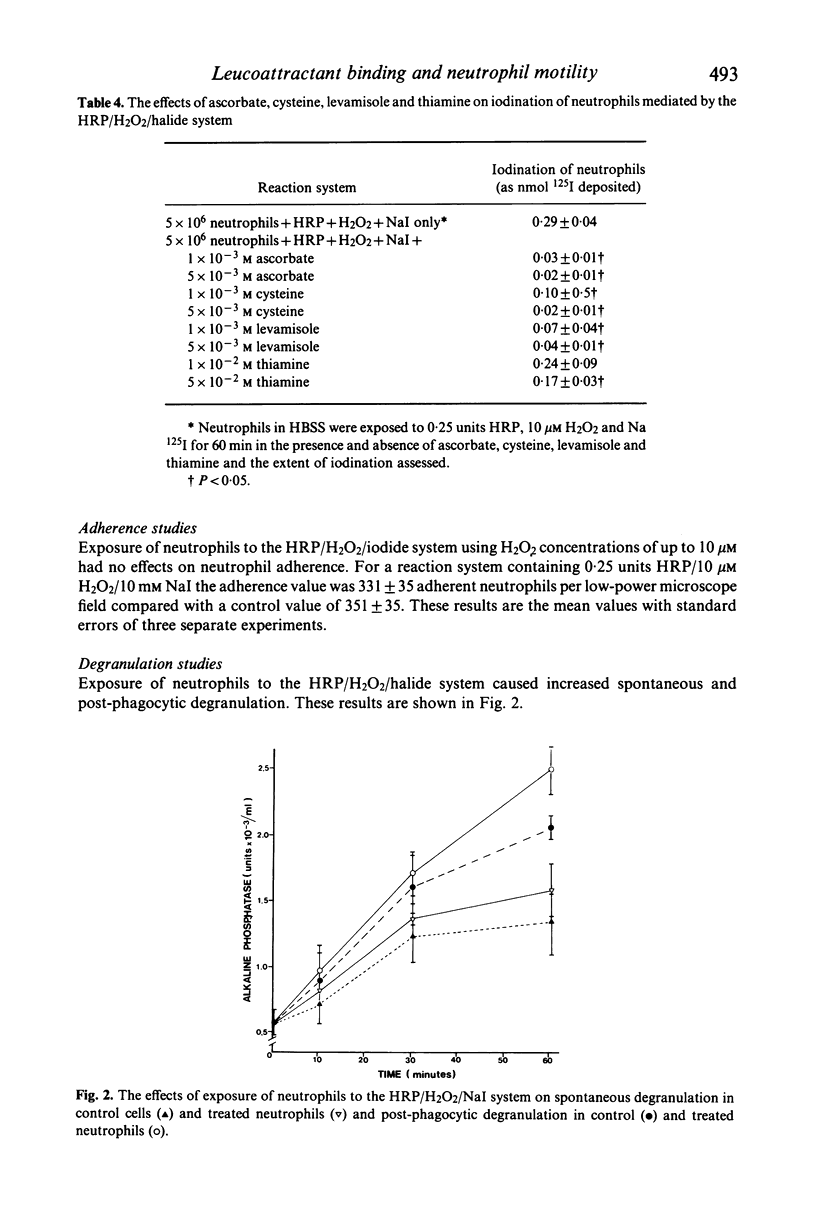

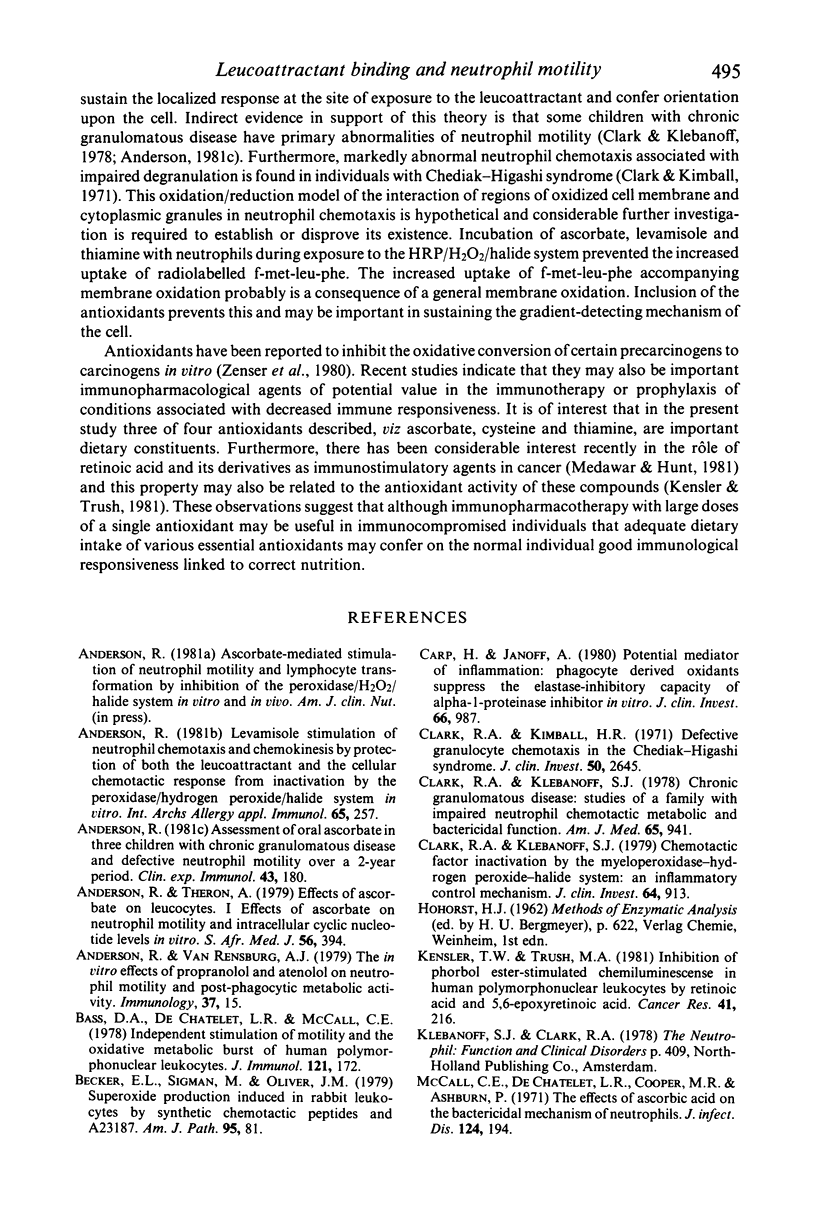
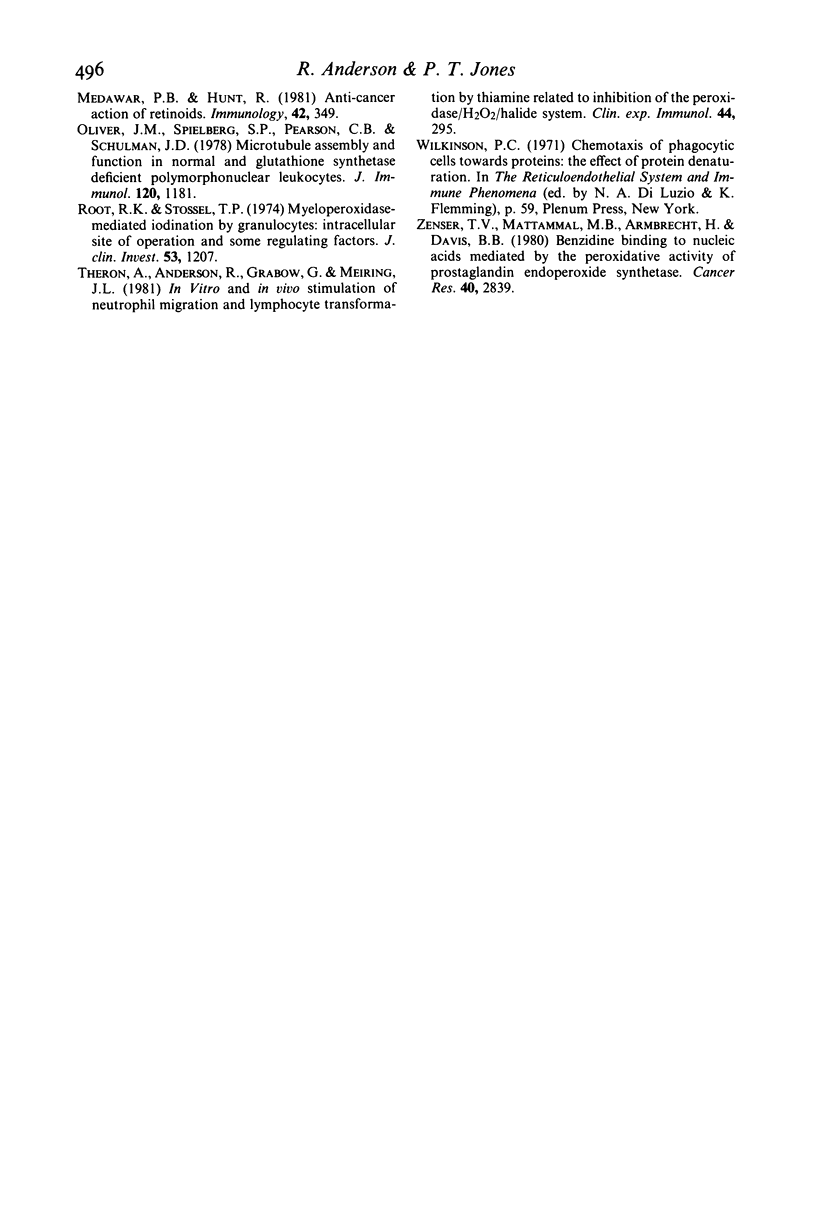
Selected References
These references are in PubMed. This may not be the complete list of references from this article.
- Anderson R. Levamisole stimulation of neutrophil chemotaxis and chemokinesis by protection of both the leucoattractant and the cellular chemotactic response from inactivation by the peroxidase/hydrogen peroxide/halide system in vitro. Int Arch Allergy Appl Immunol. 1981;65(3):257–265. doi: 10.1159/000232765. [DOI] [PubMed] [Google Scholar]
- Anderson R., Theron A. Effects of ascorbate on leucocytes: Part I. Effects of ascorbate on neutrophil motility and intracellular cyclic nucleotide levels in vitro. S Afr Med J. 1979 Sep 1;56(10):394–400. [PubMed] [Google Scholar]
- Anderson R., van Rensburg A. J. The in vitro effects of propranolol and atenolol on neutrophil motility and post-phagocytic metabolic activity. Immunology. 1979 May;37(1):15–24. [PMC free article] [PubMed] [Google Scholar]
- Bass D. A., Dechatelet L. R., McCall C. E. Independent stimulation of motility and the oxidative metabolic burst of human polymorphonuclear leukocytes. J Immunol. 1978 Jul;121(1):172–178. [PubMed] [Google Scholar]
- Becker E. L., Sigman M., Oliver J. M. Superoxide production induced in rabbit polymorphonuclear leukocytes by synthetic chemotactic peptides and A23187. Am J Pathol. 1979 Apr;95(1):81–97. [PMC free article] [PubMed] [Google Scholar]
- Carp H., Janoff A. Potential mediator of inflammation. Phagocyte-derived oxidants suppress the elastase-inhibitory capacity of alpha 1-proteinase inhibitor in vitro. J Clin Invest. 1980 Nov;66(5):987–995. doi: 10.1172/JCI109968. [DOI] [PMC free article] [PubMed] [Google Scholar]
- Clark F. A., Klebanoff S. J. Chronic granulomatous disease: studies of a family with impaired neutrophil chemotactic, metabolic and bactericidal function. Am J Med. 1978 Dec;65(6):941–948. doi: 10.1016/0002-9343(78)90745-3. [DOI] [PubMed] [Google Scholar]
- Clark R. A., Kimball H. R. Defective granulocyte chemotaxis in the Chediak-Higashi syndrome. J Clin Invest. 1971 Dec;50(12):2645–2652. doi: 10.1172/JCI106765. [DOI] [PMC free article] [PubMed] [Google Scholar]
- Clark R. A., Klebanoff S. J. Chemotactic factor inactivation by the myeloperoxidase-hydrogen peroxide-halide system. J Clin Invest. 1979 Oct;64(4):913–920. doi: 10.1172/JCI109557. [DOI] [PMC free article] [PubMed] [Google Scholar]
- Kensler T. W., Trush M. A. Inhibiton of phorbol ester-stimulated chemiluminescence in human polymorphonuclear leukocytes by retinoic acid and 5,6-epoxyretinoic acid. Cancer Res. 1981 Jan;41(1):216–222. [PubMed] [Google Scholar]
- McCall C. E., DeChatelet L. R., Cooper M. R., Ashburn P. The effects of ascorbic acid on bactericidal mechanisms of neutrophils. J Infect Dis. 1971 Aug;124(2):194–198. doi: 10.1093/infdis/124.2.194. [DOI] [PubMed] [Google Scholar]
- Medawar P. B., Hunt R. Anti-cancer action of retinoids. Immunology. 1981 Feb;42(2):349–353. [PMC free article] [PubMed] [Google Scholar]
- Oliver J. M., Spielberg S. P., Pearson C. B., Schulman J. D. Microtubule assembly and function in normal and glutathione synthetase-deficient polymorphonuclear leukocytes. J Immunol. 1978 Apr;120(4):1181–1186. [PubMed] [Google Scholar]
- Root R. K., Stossel T. P. Myeloperoxidase-mediated iodination by granulocytes. Intracellular site of operation and some regulating factors. J Clin Invest. 1974 May;53(5):1207–1215. doi: 10.1172/JCI107667. [DOI] [PMC free article] [PubMed] [Google Scholar]
- Theron A., Anderson R., Grabow G., Meiring J. L. In vitro and in vivo stimulation of neutrophil migration and lymphocyte transformation by thiamine related to inhibition of the peroxidase/H2O2/halide system. Clin Exp Immunol. 1981 May;44(2):295–303. [PMC free article] [PubMed] [Google Scholar]
- Zenser T. V., Mattammal M. B., Armbrecht H. J., Davis B. B. Benzidine binding to nucleic acids mediated by the peroxidative activity of prostaglandin endoperoxide synthetase. Cancer Res. 1980 Aug;40(8 Pt 1):2839–2845. [PubMed] [Google Scholar]


